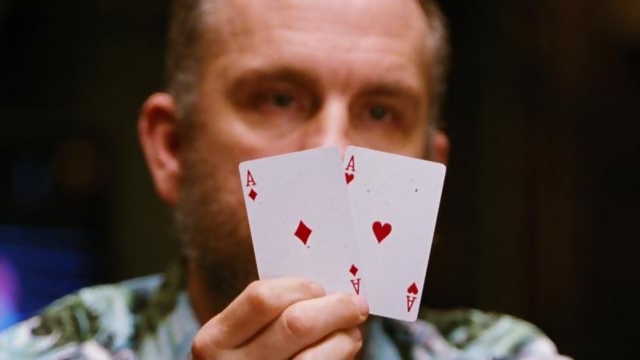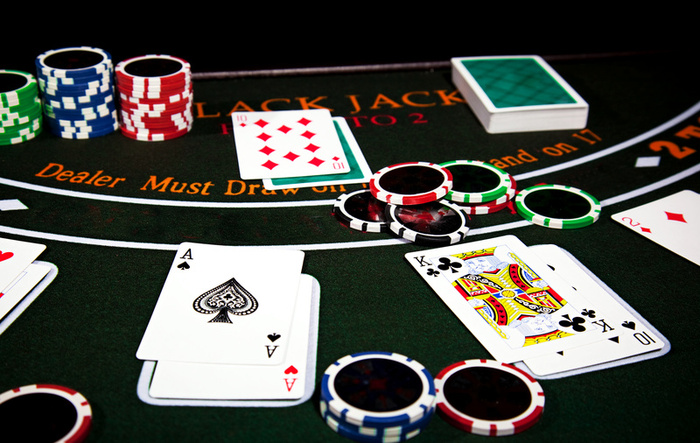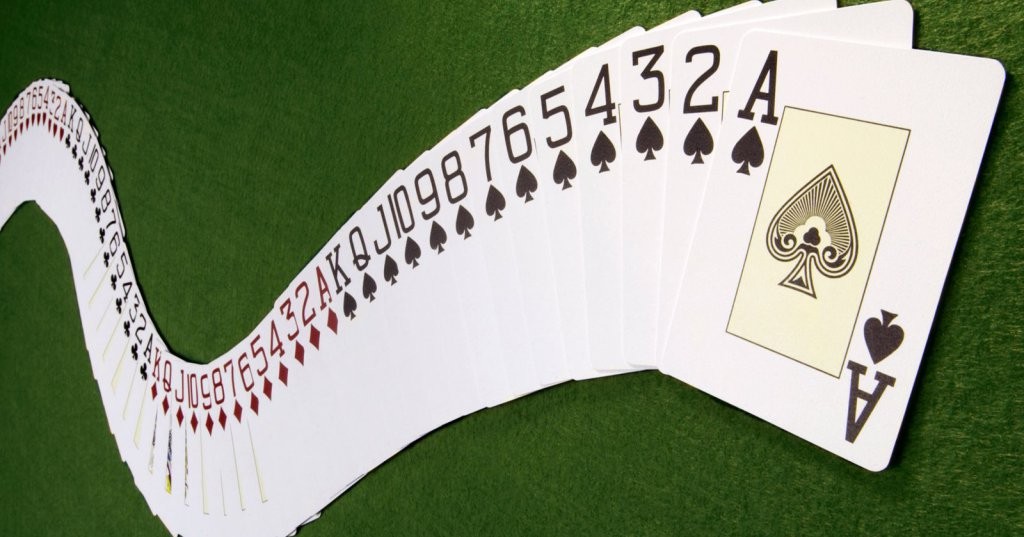No new card games are patent-eligible without the invention of a new deck
On October 26, 2010, two enterprising individuals from New Jersey filed a patent application with the United States Patent and Trademark Office for a “Blackjack Variation.”[1] The Smiths sought to acquire patent rights to a new casino game they called “Pacific Rim Blackjack.” It appears that these inventors created a card game variant that merges the concepts of blackjack with Baccarat. The application claims that “casinos are in constant need of new games of chance to retain and attract patrons.” Additionally, the patent application asserts that existing games of chance such as blackjack, Three-Card Poker™, Baccarat, and Pai Gow are “popular” but “suffer from drawbacks.”
Due to the applicants’ unprovoked attack on the greatness that is Pai Gow poker, the USPTO rejected the patent application in whole. Well, okay, the patent examiner and later the Patent Trial and Appeal Board (PTAB) actually rejected the application on grounds that the alleged invention is “abstract” and therefore not patent eligible subject matter. The inventors appealed this decision and on March 10, 2016, the Federal Circuit affirmed.[2] Though the interesting part of the decision is not the rejection of the application itself – it was the Federal Circuit’s rationale and hints at the types of card games that might actually be patentable.
Limitations on Patentability
The United States Constitution provides the backbone for all of copyright and patent law by allowing “for limited times to authors and inventors the exclusive right to their respective writings and discoveries.”[3] Particularly, with regard to patents, while “inventors” are entitled to exclusive rights – the alleged inventor must first demonstrate that there is actually a patentable invention. 35 U.S.C. § 101 provides that any “new and useful process, machine, manufacture, or composition of matter, or any new and useful improvement thereof, may obtain a patent…”
One of the limitations to patentable subject matter is that the invention cannot be “abstract.” For example, you cannot patent E=mc2. We apologize for the inconvenience, Mr. Einstein.[4] Law of nature, natural phenomena, and abstract ideas are simply not patentable according to the Supreme Court.[5] These laws of nature are considered discoveries, not inventions. How does this apply to a simple card game though? The recent Supreme Court cases of Mayo, Bilski v. Kappos,[6] and Alice Corp. v. CLS Bank International[7] have provided a series of rules and guidelines for determining what is and is not “abstract” in the patent world.
Two-Step Test for “Abstract” Ideas
In particular, through Mayo and Alice, there is now a two-step test for making legal determinations on the alleged “abstract” nature of patents and their claims. First, the Court is to determine whether the claims at issue are directed to a patent-ineligible concept such as an abstract idea.[8] Next, the Court “examine[s] the elements of the claim to determine whether it contains an ‘inventive concept’ sufficient to ‘transform’ the claimed abstract idea into a patent-eligible application.”[9]
The Federal Circuit applied Mayo, Bilski, and Alice to the claims set forth by the “Blackjack Variation” patent application. While this patent application included three independent claims, the Court focused on Claim 1, which recites:
- A method of conducting a wagering game comprising:
a) a dealer providing at least one deck of i) physical playing cards and shuffling the physical playing cards to form a random set of physical playing cards;
b) the dealer accepting at least one first wager from each participating player on a player game hand against a banker’s/dealer’s hand;
c) the dealer dealing only two cards from the random set of physical playing cards to each designated player and two cards to the banker/dealer such that the designated player and the banker/dealer receive the same number of exactly two random physical playing cards;
d) the dealer examining respective hands to determine in any hand has a Natural 0 count from totaling count from cards, defined as the first two random physical playing cards in a hand being a pair of 5’s, 10’s, jacks, queens or kings;
e) the dealer resolving any player versus dealer wagers between each individual player hand that has a Natural 0 count and between the dealer hand and all player hands where a Natural 0 is present in the dealer hand, while the dealer exposes only a single card to the players;
f) as between each player and the dealer where neither hand has a Natural 0, the dealer allowing each player to elect to take a maximum of one additional card or standing pat on the initial two card player hand, while still having seen only one dealer card;
g) the dealer/banker remaining pat within a first certain predetermined total counts and being required to take a single hit within a second predetermined total counts, where the first total counts range does not overlap the second total counts range;
h) after all possible additional random physical playing cards have been dealt, the dealer comparing a value of each designated player’s hand to a final value of the banker’s/dealer’s hand wherein said value of the designated player’s hand and the banker’s/dealer’s hand is in a range of zero to nine points based on a pre-established scoring system wherein aces count as one point, tens and face cards count as zero points and all other cards count as their face value and wherein a two-digit hand total is deemed to have a value corresponding to the one’s digit of the two-digit total; [and]
i) the dealer resolving the wagers based on whether the designated player’s hand or the banker’s/dealer’s hand is nearest to a value of 0.
This looks rather complicated and inventive, right? Actually, no. Applying the Bilski precedent, the examiner, the PTAB, and the Federal Circuit each concluded that Claim 1 does nothing more than “attempt to claim a new set of rules for playing a card game.” Card games and their variants are rather well-known by those skilled in the relevant art. The PTAB specifically noted that “shuffling and dealing cards [is] conventional in the gambling art” and that Claim 1’s new method of assigning point values to particular cards is not enough to render this as patent eligible.
On appeal, the Federal Circuit categorized this Blackjack Variant as a “wagering game” that is comparable to “fundamental economic practices” that have previously been found abstract by the Supreme Court. Prior to this appeal the PTAB already held that “a wagering game is, effectively, a method of exchanging and resolving financial obligations based on probabilities created during the distribution of the cards.” This is a fancy way of stating that the game is primarily an application of math and statistics. The Federal Circuit took it a step further and compared it to the facts of the Alice case, which concerned a method of exchanging financial obligations. This was also found to be an abstract idea.[10] This card game is also comparable to Bilski, which addressed the patentability of a method for assessing a hedging risk, which was also deemed to be an abstract idea.[11]
Of course, the two-step test allows a second bite at the proverbial apple. The card game inventors simply needed to demonstrate that this particular patent application discloses an “inventive concept” that transforms any alleged abstract ideas into something more. The Blackjack Variation application, however, merely recites the standard steps of shuffling and dealing a conventional deck of 52 cards and assigning point values to each card. Then determining a winning hand based on these point values. This is essentially the embodiment of a non-patentable abstract idea. Even though there is a claim in the application to apply these steps to a “virtual” deck of cards and make it a fully electronic game, the Bilski case had long since denied patent rights to inventions that are mere computerized versions of a known concept.
Overcoming “Abstract” Limitations to Patent a Card Game?
The interesting part of the Federal Circuit’s analysis is not the Court’s final decision on the Blackjack Variant. Instead, the Court theorized what might be patentable in the realm of card games and gambling arts. Specifically, the Court set forth a hypothetical where “claims directed to conducting a game using a new or original deck of cards” could overcome the Mayo, Bilski, and Alice hurdle for abstract ideas. Attorneys representing the USPTO even conceded this possibility during oral arguments.
What does this mean? If you create a new deck of cards that is fundamentally distinguished from the “standard” 52 card deck with four different suits of 13 cards each, and then create a new game using this novel collection of cards, you might have stumbled across something that “transforms” a known concept into something inventive that would be theoretically be protected by 35 U.S.C. § 101. You would be an inventor!
Say, have you ever played 65 card pick-up? It is this new game I created…
[1] U.S. Pat. App. No. 2012/0098197 (Oct. 26, 2010).
[2] See In re Smith, __ F.3d __, No. 2015-1664 (Fed. Cir. March 10, 2016).
[3] U.S. Const. art. I, § 8.
[4] Of course, the correct formula is that E=γmc2 – where γ is a relativistic multiple that is usually close to “1”
[5] Mayo Collaborative Servs. v. Prometheus Labs., Inc., 132 S. Ct. 1289, 1293 (U.S. 2012).
[6] 561 U.S. 593 (2010)
[7] 134 S. Ct. 2347 (U.S. 2014).
[8] Mayo, 132 S. Ct. at 1296-97; Alice, 134 S. Ct. at 2355.
[9] Alice, 134 S. Ct. at 2357.
[10] 134 S. Ct. at 2356-57.
[11] 561 U.S. at 611.



Recent Comments